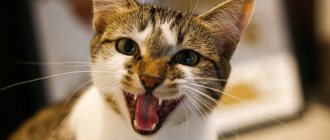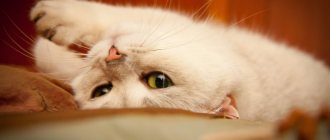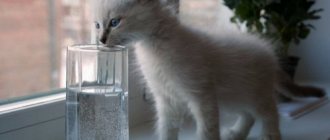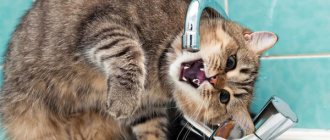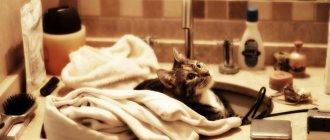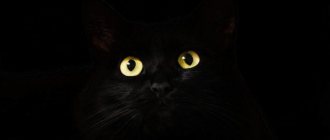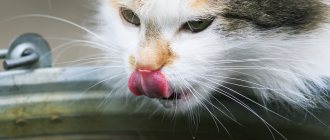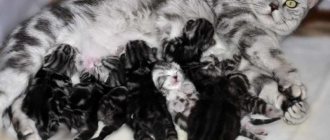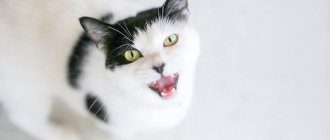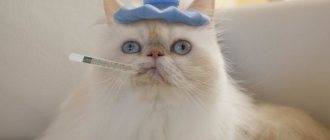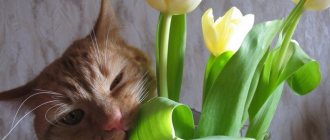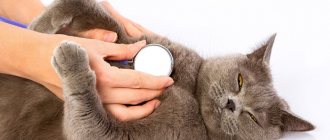- Add something tasty to the water
If your pet eats wet food, he usually does not need water. He can get all the necessary liquid from food . If the cat “sits” on dry land, water is vital for him. But what if the mustachioed man doesn’t touch his bowl? Of course, look for reasons. Well, if they don’t work, resort to tricks. In this post we will talk about both.
Before you figure out the reasons why your pet won’t touch the water, we advise you to consult a veterinarian. Dehydration can cause a lot of problems for a cat's health, but for kittens it is critical. So act without delay.
British fold blue whiskey color
I never tire of admiring the richness and flexibility of the Russian language, in which new verbal formations periodically arise, completely crazy in essence, but absolutely understandable in meaning to most people. Cats have not been left out either, and a striking example of this is the stable phrases British fold cat, British blue kitten and Whiskas cat. So who are they?
British fold
In fact, there are two separate breeds - the British Shorthair and the Scottish Fold. Unlike the British breed, the Scottish Fold appeared much later and the specifics of its breeding are such that a partner with a normal ear shape must be selected to pair with the Fold. Initially, the breed arose from the British, and although several breeds took part in the formation of the modern appearance of the Scottish Fold, in Russia matings with the British were widespread, especially until 2004, when in the most extensive felinological system of the WCF, all straight-eared kittens from such marriages were registered as British people with BRI coding, although their genetics were different. This is difficult to understand for a person inexperienced in matters of breeding, especially considering that due to the numerous connections of the British breed to the Scottish Folds, many animals of an intermediate type and straights and folds of the British type appeared. That is why this strange phrase arose as “British Fold” in conjunction with the British Straight Ear, apparently, since in appearance they were practically no different, only in the shape of the ears. (The photo on the right shows littermate kittens born in 1997, registered as Scottish Fold and British).
| Schematic representation of a typical British and typical Scottish Fold head |
| When comparing, it is clearly visible that the British have fuller cheeks; the shape of the fold's ear pads for the British would be pinched. In profile, you can see that the Fold has a round head set higher on the neck, while the British has a rounded head set low on the neck, which creates the impression of a powerful scruff. The fold profile for a Briton would be too extreme; according to the standard, the transition from forehead to nose is smooth, outlined but without a stop (sharp transition). The Scottish Straight has higher and straighter ears, with the auricle facing forward. |
| Comparison of the British and Scottish Fold physiques |
| The Briton has a large heavy body, on short powerful limbs, a short thick tail, rounded at the end. In height from the withers to the floor, the body occupies 2/3 and the legs 1/3. The Scottish Fold has a lighter constitution, longer limbs and a long, tapering tail. In height from the withers to the floor, the body and legs occupy 1/2 each. |
British blue
Another essentially incorrect phrase. Yes, the blue color is the most common and recognizable in the British breed, at least among ordinary people, but it also recognizes all colors existing in nature, and the breed is called the British Shorthair, not the British Blue. In contrast to the “Russian Blue” breed, which really exists in a single color variation, blue, which is included in the name of the breed.
| Russian blue cat, in the only recognized color - blue |
Whiskas color or whiskey color
There is no such color! No whiskey, no whiskey. Whiskas is a company that produces products and food for cats, which has chosen British cats of the silver-black patterned color group as advertising for its products. And these are at least three different colors - spotted, brindle and marbled. In the photo on the left, the kittens are not “whiskey”, but black silver spotted (BRI ns 24) and black silver marbled (BRI ns 22) colors!
Teaching your cat to drink water
To teach a kitten to drink water, you should give preference to the selection method. So, you immediately need to place containers with water of different shapes and colors in different corners of the home in order to understand which one your pet likes the most. Often, large bowls attract much more cat attention than small mugs.
Afterwards, it is important to decide on the temperature. If one cat drinks only room water, another may prefer only cold water.
One likes settled water, and the other likes fresh or flowing water. It is also important that the owner will maintain consistency. It concerns both the location of the bowl and the temperature of the water.
It is worth remembering that for a kitten the greatest authority is the mother. Therefore, if the cat herself does not drink water, she cannot teach her baby to do the same. Here the owner must take the initiative into his own hands. He can offer both pets a shallow, wide bowl of clean water at room temperature.
There is no need to panic when it comes to a kitten’s water consumption; it is best to analyze its diet, place of feeding, state of health, and only then draw conclusions. At the same time, you shouldn’t let everything take its course. Almost all cats prefer fresh and clean running water and do not like stagnant water. In addition, they drink away from places where they eat and relieve themselves.
Which liquid is most useful?
The health of a cat depends not only on the amount of fluid, but also on its quality. Before worrying about the amount of water absorption, you need to think about the best liquid to take for your pet.
Types of water:
- Boiled;
- Distilled;
- Raw type;
- Tap type;
- Bottled.
Boiled liquid has the least number of useful substances. Scientists consider such a liquid to be dead, and after several hours after boiling it becomes dangerous due to the attraction of microbes that are nearby.
Experts do not recommend giving your pet boiled liquid not only for this reason, it can lead to the progression of urolithiasis. Distilled water also has almost no benefit.
Tap liquid is endowed with various chloride compounds, bacteria, organisms, salts, and so on. The general composition of tap fluid is not needed by a cat’s body, especially at an early age.
Raw liquid from a spring or well is considered useful, but at the same time it may contain many unnecessary substances.
Bottled liquid is considered the most useless option, but it must be of high quality. It is better to give your pet water from a bottle, which is obtained from underground sources. Such water is most often expensive and not every owner buys it.
Doesn't drink or go to the toilet
If you find that your pet is not touching water or using the litter box, this could be a sign of urolithiasis or kidney inflammation. In any case, the animal must be examined by a doctor and appropriate treatment prescribed.
Sometimes this can happen due to extreme stress. Cats that had to urgently leave their home with their owners and stay in an unfamiliar place for a long time, with a large crowd of people, may not drink and, accordingly, not go to the litter box for 2-3 days. As soon as the animal finds itself in a calm environment, its condition should normalize on its own.
Drink for a sick cat
What fluids should you give if your cat is sick?
If a cat is sick or recovering from an illness or surgery, its owner should closely monitor how much fluid it drinks. If a cat has greater than usual needs for water, the veterinarian will definitely tell its owner about this. However, just in case, it wouldn’t hurt to ask him about it yourself. Despite all the professionalism of veterinarians and, probably, the utmost responsibility and love for their work, we should not forget that veterinarians are people too and can make mistakes somewhere or simply forget about something, especially if the veterinarian is experiencing an influx of patients. Therefore, ask, ask questions and they will answer you: as experience shows, owners who themselves ask the veterinarian questions are the most loved by them.
If the cat needs more water than usual, then it can be given in much the same way as medications produced in liquid form are given.
Water norm
An adult cat should consume 40 ml of liquid per 1 kg of weight, a kitten needs 10–15 ml per day. This value is not constant, it depends on the weight of the pet.
The daily norm can be easily calculated using the formula: multiply the weight of the animal by a factor of 0.03.
What does it depend on
Cats and kittens eating dry food require more water. Cats that eat liquid food need to drink less.
In summer, with low humidity, the animal will drink a lot and plentifully. This is a normal process of replenishing moisture in the body. In winter, the pet occasionally comes to the drinking bowl.
Important! Cats drink day and night; their drinking bowl must be filled with clean water around the clock.
How much should a kitten drink depending on its age?
A baby up to 1 month of age needs only breast milk. The cat is 4-6 weeks old and the cat begins weaning it. He gradually switches to soft food, then to solid food. There is a need for additional sources of fluid.
The amount of water consumed depends on the weight of the kitten.
Table: norm of water consumption for a kitten depending on age and weight
| A kitten’s daily water consumption rate is calculated using the formula: m (g) x 0.03 = V (ml), where m is the kitten’s weight in grams, V is the volume of water required | ||
| Kitten age (months) | Average weight (g) | Required amount of water (ml) |
| 1 | 200–500 | 6–15 |
| 2 | 700–1300 | 21–39 |
| 3 | 1200–1700 | 36–51 |
| 4 | 1800–2200 | 54–66 |
| 5 | 2300–3500 | 69–105 |
| 6 | 2500–4000 | 75–120 |
| 7 | 2800–4200 | 84–126 |
| 8 | 3000–4500 | 90–135 |
| 9 | 3300–5000 | 99–150 |
| 10 | 3500–5500 | 105–165 |
| 11 | 3700–5800 | 111–174 |
| 12 | 3900–6000 | 117–180 |
Harm from a lack of fluid in a kitten’s body
The owners are worried that the pet doesn’t drink enough. The concern is justified. An insufficient amount of water in a kitten’s body can affect its health:
- there is a high probability of formation of kidney stones;
- dehydration worsens the condition and appearance of the animal;
- insufficient water consumption leads to problems with the coat;
- the mustache falls out or becomes brittle;
- lymph thickens, which leads to disruption of the water-salt balance.
Eating dry food can aggravate dehydration. Lack of water causes inhibition of the animal's mental and physical development.
When feeding dry food, water is vital for animals
The cause of concern may be unfounded if the animal eats natural food that is rich in moisture. Food products suitable for a kitten include dairy products, cereals and eggs. Canned wet food is added here. They contain a sufficient amount of moisture. But if the kitten categorically does not approach the water, the problem cannot be left to chance.
What determines the frequency of water consumption in a healthy kitten?
The following factors influence the number of water intakes:
- moisture content in the animal's diet;
- ambient temperature conditions.
Kittens that eat canned and natural food drink less. Babies whose diet consists of dry food experience a lack of fluid in the body. Accordingly, they need an additional source of moisture.
A kitten's drinking behavior depends on environmental factors. If the weather is dry and hot, the amount of water consumption may increase several times. In cool weather, the animal can drink very little.
The kitten drinks not only during the daytime, but throughout the day. Therefore, it is important to provide him with unhindered access to water.
How to tell if your kitten has enough water
Appearance helps determine whether an animal has enough water. Dehydration is noticeable to the naked eye:
- sunken eyes;
- lethargy, shortness of breath;
- refusal to eat;
- the kitten does not go to the toilet (the norm is 3-4 bowel movements per urination process daily);
- dull coat;
- skin peeling.
To understand whether the animal is experiencing a lack of fluid, it is enough to observe the kitten for some time. A dehydrated animal loses its skin elasticity.
To check whether the kitten is suffering from dehydration, pull back the skin on the withers (this is where the mother cat usually carries her babies) and release. If everything is in order with elasticity, then the pulled skin on the nape will quickly take its natural shape.
Pull back the kitten's scruff to check if he is lacking fluids.
In addition, the coat should form a single coat, without bald patches. There should be no peeling of the epithelium. A healthy baby is always cheerful and curious.
Reasons why a kitten does not eat dry food
You need to understand what foods your pet likes. Perhaps he prefers to eat liquid cat food or natural products. In this case, it is worth thinking about the need to feed the animal and accustom it to dry food.
It is convenient to feed him prepared food, as this saves the owner’s time. In addition, cat food manufacturers claim that the food contains essential nutrients and vitamins.
In order to teach your pet to eat dry food, you need to understand the reason why your pet refuses it:
- The cat may not like the food or may simply be too cold.
- Dry food can become boring for an animal. In such a situation, it is worth switching to canned cat food so that the diet is varied.
- The food lost its attractive smell for the kitten after the food had been left in the air for several days. It can be removed after he has eaten. At your next meal you need to add a fresh portion of food.
- Your pet may refuse to eat from dirty dishes that contain dried food remains.
- Water got into the bowl; soaked food is disgusting to cats.
- If the kitten is lethargic, does not go to the toilet, and refuses any food or water, then this may indicate that the pet is sick.
- Perhaps he is full and does not want to eat.
Methods for determining the amount of water you drink per day
Cats drink as much as they need. According to statistics, the daily norm should be from 20 to 40 mg per 1 kg of body. If your cat weighs 5 kg, she should drink up to 100 ml of liquid per day. Pregnant and breastfeeding women should drink twice as much. Breastfed kittens do not need water at all. They receive their daily fluid intake from their mother's milk.
A cat's body is made up of 70% liquid.
The given amount should not be considered as something that a pet must necessarily drink daily. Consumption depends on the following points:
- age, weight and breed of the cat;
- time of year and room temperature;
- type of feed;
- convenience of drinking bowl.
If the cat is on dry food, liquid intake should be two or three times the amount eaten. For example, if an animal eats 50 g of food, then it should drink from 140 to 180 g of water, depending on its weight. Canned food contains about 80% liquid. To quench your thirst, 100 g of water will be enough for your cat.
Important! Even if the kitten has eaten soup or drank kefir, clean water must be present, otherwise it will not receive the necessary minerals. Increased thirst over several days is a reason to consult a veterinarian
Increased thirst over several days is a reason to consult a veterinarian
The less a cat drinks fluids, the less elastic its skin
Step-by-step instruction:
Carefully grab the skin above the shoulder blades. Pull it up and down. Normally, it should immediately return to its place.
Kittens under eight months of age have rougher skin than older cats and will take longer to recover.
You also need to pay attention to how often your cat urinates. If she goes to the litter box at least 2-3 times a day, then this is a sign of normality.
This can be easily checked by the condition of the tray.
You can do one of the old tests: open your pet's mouth slightly and lightly press on the gums. If it acquires a light shade and does not change color within three seconds, this indicates illness.
Important! If the mucous membrane is light, saliva is viscous and weakly secreted, this may indicate pathology. You can check for dehydration by looking at your eyes.
Deeply sunken ones indicate that the cat is not drinking enough fluids. In a healthy animal, the eyes appear slightly sunken. With age, as well as in thin or chronically ill pets, sunken eyes indicate normal
You can check for dehydration by looking at your eyes. Deeply sunken ones indicate that the cat is not drinking enough fluids. In a healthy animal, the eyes appear slightly sunken. With age, or in thin or chronically ill pets, sunken eyes are normal.
Note! Cold paws indicate severe dehydration. The main symptoms also include:
The main symptoms also include:
- dry skin;
- lethargy;
- apathy;
- poor appetite;
- sunken eyes;
- constipation or diarrhea;
- arrhythmia;
- poor sleep;
- weight loss;
- saliva viscosity;
- pale gums.
Important! If at least one sign is detected, it is necessary to immediately begin procedures to restore water balance. Cats' fluid intake varies from person to person.
It depends on several factors:
Cats' fluid intake varies from person to person. It depends on several factors:
- Animal weight. For every kilogram of body weight of a four-legged pet, ideally there should be from 20 to 40 ml of water per day, according to other sources - about 50 ml.
- Age. Kittens require less fluid than their mature counterparts. Most older cats are thirsty.
- Nutrition. A pet that eats high-quality ready-made food that does not contain salt and has a balanced composition needs less water than its counterpart that eats a low-quality product. Broths and gravies included in a cat's diet, which consists of natural food, provide their body with moisture, as a result of which the pet's need for clean water is reduced.
- Level of physical activity. Energetic cats require more fluids than four-legged couch potatoes.
- Time of year and air temperature in the room where the pet is constantly located. In the heat, the need to drink increases.
How to determine if your cat drinks enough fluid per day
To make sure that your cat drinks a lot and has enough moisture entering the body, you need to pay attention to:
- Condition of the skin. When your pet drinks little fluid, the skin becomes inelastic. Only in a well-drinking pet will the scruff of the neck return when pulled back. When this does not happen, then we can confidently say that the cat is not receiving enough fluid.
- Only an animal that drinks well has shiny fur.
- When an animal eats dry food and drinks little water, it becomes lethargic and lacks physical activity.
- You need to pay attention to how often the cat urinates; if it urinates at least 2-3 times a day, then this is a sign of normality. This can be easily checked by the condition of the tray.
The normal functioning of organs depends on how much moisture enters the pet’s body. To prevent the kitten from becoming lethargic, it needs a large amount of fluid.
How can you train a cat to drink water?
To avoid health problems in the future, he must be taught to drink more from an early age. How to do this? The easiest way is to teach a cat to drink water after an active pastime. During play, the kitten loses more moisture than in a calm state. This is a great chance to teach them to drink clean, cool water from a bowl.
When a kitten categorically does not drink, you can try to force him to drink, for example, using a syringe filled with water. You can also add extra liquid to the food your cat eats if it contains little water.
The selection method has proven itself quite well; to do this, you need to place bowls of clean water throughout the house, in this way you can find out exactly where the cat is most comfortable drinking moisture and what level is most convenient for him. You can try pouring it into bowls of different shapes and sizes. As a rule, pets most like bowls that resemble a lake, that is, the larger the volume, the more comfortable it is to use.
You can dilute canned food in water, this can help accustom him to water, but dry food cannot be diluted, because this can lead to improper water quality.
What water to give a kitten
A kitten fed by a cat does not need water. He gets enough fluids with milk. The mother cat is the kitten's role model. She teaches him everything she knows and can do. A kitten without a mother may not drink water for the simple reason that it does not know how to do it. This happens if the kitten is taken away too early while the cat continues to feed it. Another reason is that the mother cat also drank little water.
shutterstock
The kitten is not able to understand that it needs to drink water, the taste and smell of which are different from mother's milk. You will have to accustom the kitten to the taste and smell of water. You need to be careful when choosing water for your kitten. Water quality is of great importance.
Water that should not be given to a kitten:
- chlorinated;
- boiled;
- distilled.
Chlorinated tap water will not only repel the animal with its smell, but will also be harmful. You should not use boiled or distilled water because it is useless: it lacks the mineral elements necessary for metabolic processes in the body. If you pour boiled water into a bowl, after 3 hours it becomes dangerous due to infection. A sterile environment is an ideal place for microbes to multiply.
In addition to the quality characteristics of water, it is important to choose dishes for water: shape, size, method of serving. The bowl should not have an unpleasant smell of low-quality plastic
In such a container, the water quickly stagnates and acquires the same smell and taste. To determine the kitten’s preferences, water is poured into several bowls of different sizes and shapes and placed in several places.
Observing the kitten will show which particular dish he will choose. The water temperature depends on the kitten’s taste, which the owner needs to find out. Fresh water can be: room temperature, chilled, heated.
How to tell if your cat is not drinking enough water
An acute lack of fluid in the body at the cellular level leads to the fact that the cellular structures shrink, the blood and lymph circulating throughout the body become much thicker. Oxygen does not penetrate the cells in the required quantity, oxygen starvation occurs. Against the background of dehydration and serious disorders, pathological changes occur in the intestinal tract, ureter, and respiratory tract. The pet becomes lethargic, the coat becomes dull, and the animal’s state is apathetic.
It is necessary to understand that young animals in good health can be without drinking water for a long time - for 3-4 days. The older the animal is or has a history of a number of chronic diseases, the higher the risk of pathological changes when dehydration occurs. The body's reserves are depleted, which provokes severe problems, which ultimately leads to death.
Unlike dogs, cats are not particularly fond of drinking water, especially in large quantities. However, their need for clean drinking water is significant. Cats need much less fluid per day than dogs or other animals, but without water the body cannot function normally.
As a result of the fact that water is an important component of both cellular structures and intercellular space, the biological properties and structures of elements are determined, influencing the process of thermoregulation of the body and the transfer of useful components.
Regular loss of fluid occurs in the body along with salivary fluid, urine and feces. In the absence of replenishment, serious complications arise that provoke problems in the functioning of the entire body.
If a cat refuses to drink on its own, the risk of dehydration increases. Against the background of dehydration of the whole body, internal organs begin to suffer, and first of all, the central brain. All metabolic processes in cells are disrupted.
Scientists have proven that with a percentage loss of body fluid of up to 10%, there is a high risk of developing irreversible processes in the tissue structures of the body. If the percentage of fluid loss exceeds 15-20%, the animal may die. Dangerous conditions that lead to a sharp development of dehydration are stool disorders (profuse diarrhea), persistent vomiting, extensive hemorrhages (especially internal bleeding) against the background of injuries to internal organs, edematous conditions. In addition to fluid, the body loses a large amount of microelements, vitamins and other nutrients.
Such conditions and changes in the body are difficult to normalize. As soon as the owner notices a problem in the pet’s health, it is recommended to immediately contact a veterinary clinic for help. Only in a hospital hospital setting is it possible to carry out infusions of saline solutions, glucose or other substances that maintain the body’s water balance at the required level, avoiding the development of complications.
If the cat only drinks water from the tap
This situation can be a problem for most owners. The question arises, how to teach a cat to drink water from a bowl, and why he prefers to ignore it. This behavior of a pet is due to the call of nature.
Since ancient times, cats have been looking for rivers and reservoirs with drinking, fresh water to quench their thirst. Their instincts told them that running water was much cleaner than that standing in puddles or swamps. Therefore, many cats are still confident that a babbling stream from a faucet is much healthier for them.
There is another interesting fact that is associated with the reluctance of cats to drink from bowls. In the wild, a cat has to eat its prey and leave its remains to rot on the ground. The water that is nearby becomes infected with corpse poisons released from carrion. That is why cats' instincts forced them to look for water away from food. First they ate the meat, and then went in search of a body of water, while ignoring those that were near the remains of the victim. This point should be taken into account when thinking about how to teach a cat to drink water from a bowl rather than from a tap. You just need to place a container of water a little further from the plate of food.
Why doesn't the kitten drink water?
A pet who does not want to drink water does so for a specific reason:
- The kitten has just been weaned from its mother and is not accustomed to water.
If a small animal has just been weaned from its mother, then it must be taught to drink from a saucer. Ideally, a kitten should transition from breastfeeding to food and water following the example of its four-legged parents.
- The kitten does not drink because the bowl or place is unclean.
As already mentioned, water for your pet should be odorless and colorless. Accordingly, the water bowl should be clean and free of food odor. Since childhood, cats have been fairly clean creatures who will not drink water in a polluted dining area. It is precisely because the container or dining area is unclean that cats will not drink liquid from a bowl, but rather drink from a tap, aquarium, or sink.
- The pet does not drink liquid from low-quality containers.
Some pet food and water containers are made of low-quality, smelly plastic.
People, as a rule, do not pay attention to the quality of plastic, but such a sensitive creature as a cat reacts very strongly to low-quality dishes. For this reason, it is better to purchase ceramic dishes for your pet that are odorless and easy to clean.
For this reason, it is better to purchase ceramic dishes for your pet that are odorless and easy to clean.
- The kitten is not used to drinking from a bowl.
It is imperative to teach your kitten to drink from a dish. By analogy, he will not do this. If a small cat doesn’t know where to drink from, he starts catching liquid by smell and gets used to drinking from a sink, tap, toilet, or aquarium. In this case, you should try to replace the container by analogy.
- Water quality matters to your pet.
If the kitten feels that there is an unpleasant odor or uncleanness in the water, then for its own protection it refuses to drink. Therefore, it is necessary to filter the water, settle it, or buy it in bottles.
- The kitten may not drink due to illness.
Refusal of water in itself is not a symptom of illness. To establish a diagnosis, additional symptoms are necessary, for example, vomiting, lethargy, diarrhea, drowsiness.
Ways to teach people to drink water
It is not recommended to forcefully poke your muzzle into the bowl. Such actions will frighten the animal, and it will refuse to lap for a long time. If the kitten does not drink water at all, what should you do in this case? There are several ways to teach it.
Outdoor games will make you thirsty
Active games
During movement, fluid loss increases. It's time to put a bowl of water in a visible place. There is another way to get used to drinking water. You should wet the animal’s nose with a drop of water or milk, it will definitely start licking and drinking.
Syringe without needle
Sometimes all methods of accustoming kittens to a bowl do not give the desired effect. In this case, it is necessary to forcefully water the animal. To do this, use a syringe without a needle, with which liquid is injected through the cheek.
A good bowl should be made of ceramic, glass, stainless steel
Some owners add liquid to the food that the animal eats.
drinking fountain
Kittens are inquisitive animals, so it is important to keep them interested. For example, place a fountain with dripping water in an accessible place
Curiosity will make the animal come up, sniff, and put its face in the water. Such devices are additionally equipped with a cleaning system and filters; several bowls. Some kittens do not lap because the saucer is too high or low. You can determine what exactly your pet likes using the selection method. To do this, drinkers of different shapes and diameters are placed throughout the room. Some of them are placed on a high surface, for example, a windowsill, others are placed on the floor; replacing the drinking bowl. If the container is too small, it is uncomfortable for the cat to drink from it. The mustache rubs against the edge of the vessel and bends. It has been noticed that many animals prefer wide and moderately deep saucers that resemble a lake. The colored water bowl distracts the kitten; he does not always understand that there is water in the bowl. Glass or ceramic dishes will help your pet locate the source of the liquid; additives. Add a little milk or broth to clean water; the smell of food will attract the animal to the drinking bowl. However, its contents need to be changed frequently, as they quickly deteriorate; offer liquid at different temperatures. Some kittens like cool water, others are happy to lap up warm water; Throw an ice cube or a couple of dry food pellets into a bowl. Standing water repels the animal, and objects spinning in it target the game. However, it is not recommended to leave dry food in a bowl for a long time, as it causes water spoilage.
The water in the drinking bowl needs to be changed twice a day.
It is not recommended to give boiled water to pets, as it is devoid of minerals and oxygen. In addition, microbes multiply quickly in it. Cats are prohibited from drinking distilled and mineral water. The liquid from the tap contains a lot of salts and provokes the formation of kidney stones. If your cat prefers to drink tap water, be sure to provide it with a filter. Otherwise there shouldn't be any problems. If your pet doesn't want to drink, he won't do it if he's forced into a bowl.
When a kitten appears in the house, the owner is faced with many new worries. It is necessary not only to decide on feeding your furry pet, but also to monitor its upbringing and hygiene.
One of the most common problems at the initial stage is the pet’s refusal to drink fluids. If a kitten does not drink water, you need to figure out why this is happening and how to help him.
Answers on questions
Each cat is individual. Some simply drink water without creating any problems for the owner, while other representatives of the feline family are afraid of any liquid and categorically refuse to put their muzzle in a bowl so as not to wet their whiskers.
We have prepared answers to the most common questions that owners of pet cats and cats have.
The cat does not drink water: what to do
A cat's reluctance to drink water may alert the owner.
Insufficient fluid intake leads to dehydration of the body, disrupts the biochemical parameters of the blood, which in turn provokes the development of severe liver and kidney diseases. Before taking measures to correct this situation, you need to determine the reason for the cat’s refusal to drink fluids. Reasons why a cat does not drink water:
- The cat eats wet food. They contain up to 80% liquid, which is quite enough for the animal’s body.
- Reluctance to drink from an uncomfortable bowl. You can try changing the water tank to another one with wider edges, so that it is more convenient for the cat to lap up the water.
- Stale or poor quality water. Cats are very finicky and may refuse to take liquid if it does not meet their needs.
- Serious illness. As a rule, in such cases, the cat refuses not only water, but also food, or consumes it in smaller quantities, without showing much appetite. In this case, the animal needs to be shown to a veterinarian.
Try to find out the reason for the cat's refusal of water. Observe her and if you see that she drinks water from other sources, but categorically refuses to lap up the liquid from her bowl, try replacing it or placing it away from the food bowl. Some cats generally do not drink water if it is next to food.
Special additives that improve the taste and quality of the liquid will also help to accustom your cat to water. Some breeders add a pinch of soda to drinking water or throw an ice cube into a bowl of water. Cats are very curious and may become interested in water if something foreign is floating in it.
If your cat is often outside, there is a high chance that she is getting the amount of fluid she needs from outside sources. These could be ordinary puddles, which, of course, is very unsafe. In this case, the animal can only be retrained by limiting its access to the street for independent walks.
Is it normal for a cat to drink a lot of water?
Excessive water consumption is a clear sign of extreme thirst, which may indicate the development of certain diseases in the cat's body. This symptom is typical for hormonal disorders, diabetes, kidney disease, infectious diseases and febrile conditions.
If your cat drinks a lot of water and there are additional signs of her unhealthy condition, you should immediately take her to a veterinarian, who can determine the exact problem of her unhealthy interest in drinking liquids.
There is no need to worry if a cat that regularly eats dry food drinks a lot of water. With such a diet, the animal must consume a sufficient amount of liquid per day.
Can cats drink sea and salt water?
Cats located far from fresh water can quench their thirst with sea water. Their body filters salt well and removes the unnecessary element naturally. There will be no harm to your cat after drinking salt water, but you should not give it to your cat for daily drinking.
Should I give my cat mineral water?
There are times when a cat accidentally drinks mineral water from its owner’s mug and shows with all its appearance that it quite liked this liquid. Should you give your cat mineral water? Absolutely not, only in the absence of fresh water or for medicinal purposes, as prescribed by a veterinarian. If you regularly give your cat mineral water, urolithiasis may develop.
Should you give your cat boiled water?
Boiled water has a specific taste and, as a rule, cats do not particularly like it. In addition, it is completely useless for the body, so it is not recommended to give such water to a domestic cat. It is better to choose filtered, frozen or bottled water for drinking your pet.
Why does a cat move or overturn the bowl and spill water?
The cat spills water, moves the bowl - what to do? Many animals simply play with water, trying to entertain themselves with something. The reason for this behavior may also be the proximity of the food bowl. Try moving the water container to a different location.
And with this behavior, a cat may indicate the need to change stagnant water to clean and fresh. Change the fluid, not forgetting to rinse the reservoir itself thoroughly.
Watch your cat and learn to recognize her desires! Don't ignore the problem of water refusal or excessive thirst. In any unclear situation, contact your veterinarian.
Possible reasons
Many owners are concerned about the condition of their pets, so they monitor their diet. Common reasons why a cat doesn't drink at all:
Having just been weaned from its mother, the pet does not yet know how to absorb water; it is not accustomed to it. When you bring a cat into your apartment, you need to gradually accustom it to drinking from a bowl.
When the pet’s drinking place is dirty, she will not drink this water. Cats are very clean animals, so they will not use dirty dishes. This is why the cat drinks from the tap or other places. Sometimes the dishes displayed for drinking are made of poor quality materials, they have an unpleasant odor or color, and animals are quite sensitive to foreign odors. Ceramic dishes are best suited for water for your cat. When a cat does not drink from a bowl, this may be the reason that he is simply not accustomed to the process itself. He tries to drink from another place. In this option, you need to observe where it is more convenient for him to drink from and try to bring a similar bowl as a replacement. The cat may be frightened by the smell of chlorine present in the liquid. You can buy him purified water or filter regular water. Another reason is the disease of the animal. If he does not drink water, this may be a signal of the development of pathology
To establish a diagnosis, you need to pay attention to symptoms such as bowel dysfunction, weakness, and apathy. In such a situation, you need to contact a specialist so that he can make a diagnosis and advise how to get the cat to drink more water.
Reasons for refusal
The kitten does not drink water - options for how to train your pet
Pets drink water in small quantities. If the bowl remains untouched, the reasons may be as follows:
- The cat doesn't drink water because it's not trained. After weaning from breast milk, the kitten does not know how to drink water. To accustom a cub to water, you need to place a bowl of liquid next to it, wet your finger and wipe the kitten’s mouth and nose. The baby will develop a licking reflex, thus taming him to drink;
- dirty dishes and feeding area. Pets are clean by nature, so it is necessary to keep the feeding area and water bowl clean. Twice a day it is necessary to pour boiling water over the drinking bowl and food saucer. The drinking bowl should be located separately from the food so that crumbs do not get into the drink;
- incorrectly selected bowl. When choosing dishes, you should consider the breed of the cat. For British or Persian, a shallow bowl will do. The material you should use is a ceramic drinking bowl. Plastic can emit an unpleasant odor, and cats are very sensitive to them;
- feeding features. The pet refuses water if it eats wet food;
- outside source. Cats often drink water from the bathroom tap, toilet, sink, or aquarium. The owner of a four-legged animal should interest the pet and try to create the same environment. You can replace the aquarium with a saucepan, and you can use a fountain to imitate a stream;
- proximity of the bowl to the toilet, washing powders and other detergents. Water can easily absorb odors from detergents. An animal may refuse to drink near the place where its tray is;
- health status. Fluid refusal can be associated with various diseases;
- sterilization of a pet can provoke a refusal to drink for 12 hours;
- childbirth. Drinking after childbirth decreases. After the natural process, the cat must be given something to drink after 2-3 hours. After prolonged labor and caesarean section, the fluid is given intravenously.
A kitten must have at least two bowls
What are the dangers of a lack of fluid in a cat?
The situation when a kitten does not drink water causes great concern for the owner and for good reason. If the baby does not drink, then this is very dangerous for his health, as it can cause the development of urolithiasis. A condition during which a cat drinks little can lead to the death of the pet. From a lack of moisture, his general health deteriorates, which immediately affects the condition of the coat and whiskers.
When a cat does not drink water, it is dangerous because the lymph thickens, a disturbance in water-salt metabolism occurs, which leads to serious consequences.
There is a danger when a cat drinks little water and at the same time eats dry food that contains little liquid, so the pet must drink more, otherwise dehydration can cause growth retardation, which will lead to serious health problems. In this situation, it is necessary to force the pet to drink water, we will tell you how to do this below.
What cases should not cause concern to the owner?
If the pet is very small and is fed by the mother cat's breast milk, then there is no need to worry that the kitten does not drink water, because it draws all the necessary liquid from the mother's milk. At this time, the baby, in addition to all the necessary nutrients, also receives the right amount of moisture.
There is also no need to worry that the cat does not drink water when it eats natural food; products such as kefir, milk, sour cream, and eggs contain the necessary liquid. When a cat eats canned food or cereal, it requires less moisture than when it eats dry food.
Symptoms of dehydration in cats
If your cat eats dry food and does not drink, we advise not to wait for signs of dehydration and contact your veterinarian immediately. However, it is worth being aware of the symptoms of dehydration. Here are the main ones:
- Frequent breathing.
- High and weak pulse.
- Salivation.
- Shiver.
- Urinating too often or too infrequently.
You can also determine whether a cat is dehydrated in the following way. Gently lift the skin from the back of your neck. If she quickly returns to her place, then everything is fine. If the skin slides down slowly or remains in place, your pet needs water.
Up
Norm per day
In the body of an animal, including a cat, water makes up 4/5 of its body. The overall functioning of all functions and organs depends on the amount of fluid; a lack of water leads to a slowdown in the absorption of necessary substances into each cell.
If the kitten completely stops drinking liquids or eating wet food, the plasma and lymph will become thick, the water-salt metabolism will change, which will lead to frightening consequences. With age, there is less and less water in the body. In the body of a young pet, moisture is somewhere around 70-80%, in an old cat - 50%.
The internal reserves of a young cat are enormous, and even if he stops drinking water, and this lasts for a week, he will be able to survive. With older pets the situation is different.
Doctors believe that the amount of fluid that a cat must necessarily drink can be calculated. It all depends on the weight of the animal. The norm is calculated using the standard formula: weight * per 0.03.
We must not forget that drinking a large amount of liquid to an animal is much more dangerous than refusing it. If a cat drinks a lot of water, then his kidneys are in danger or he has been poisoned.
Should you force your pet to drink?
The need for forced drinking depends on the reason for refusing to drink and general well-being. In the absence of pathologies, such pressure has the opposite effect. It is much better to try the recommendations described above.
If your pet recovers from anesthesia, then he will have to be fed from a syringe without a needle for about a day. Otherwise, there is a risk of dehydration. The same applies to the listed disorders, with the exception of rabies.
